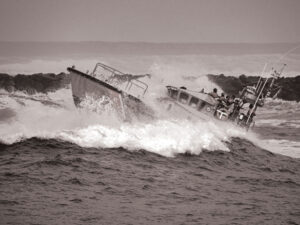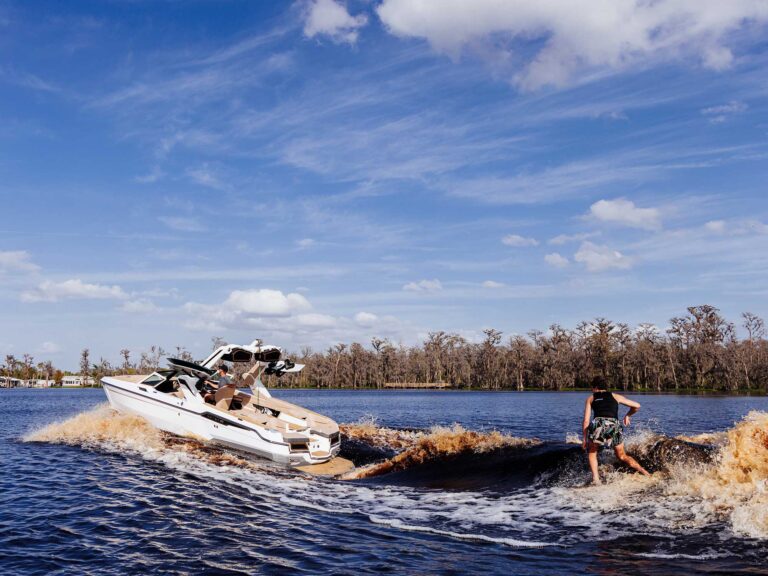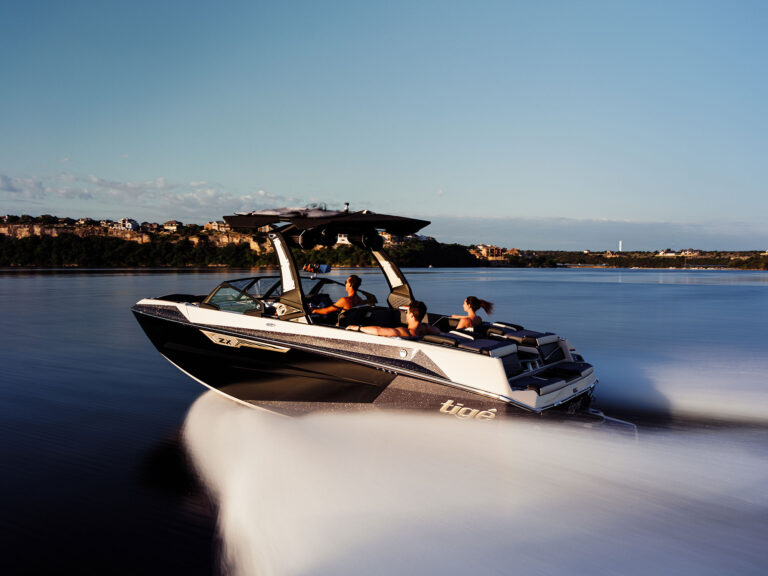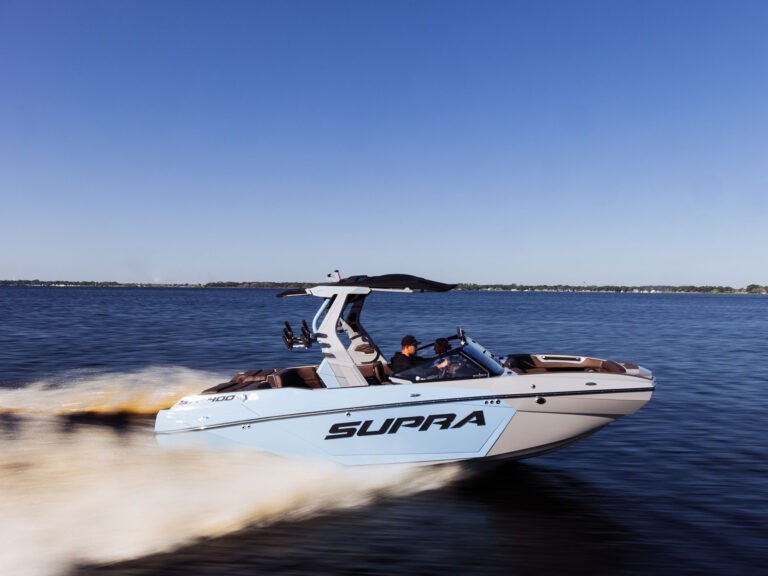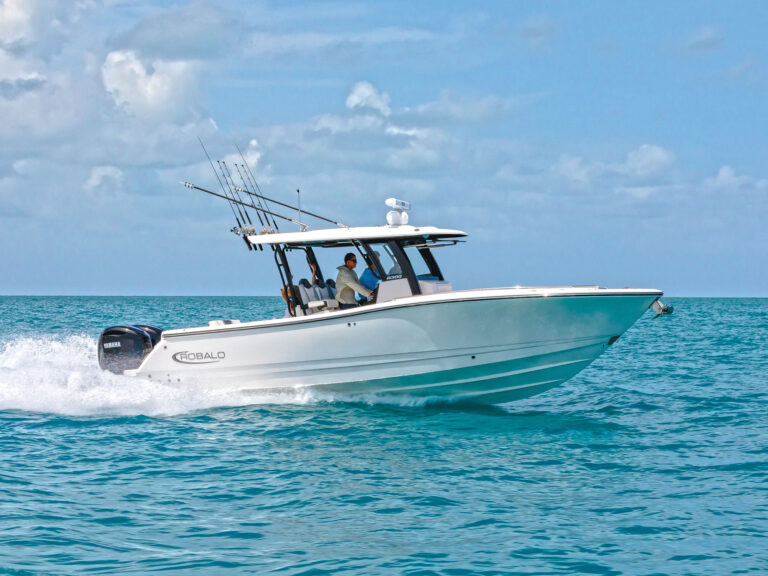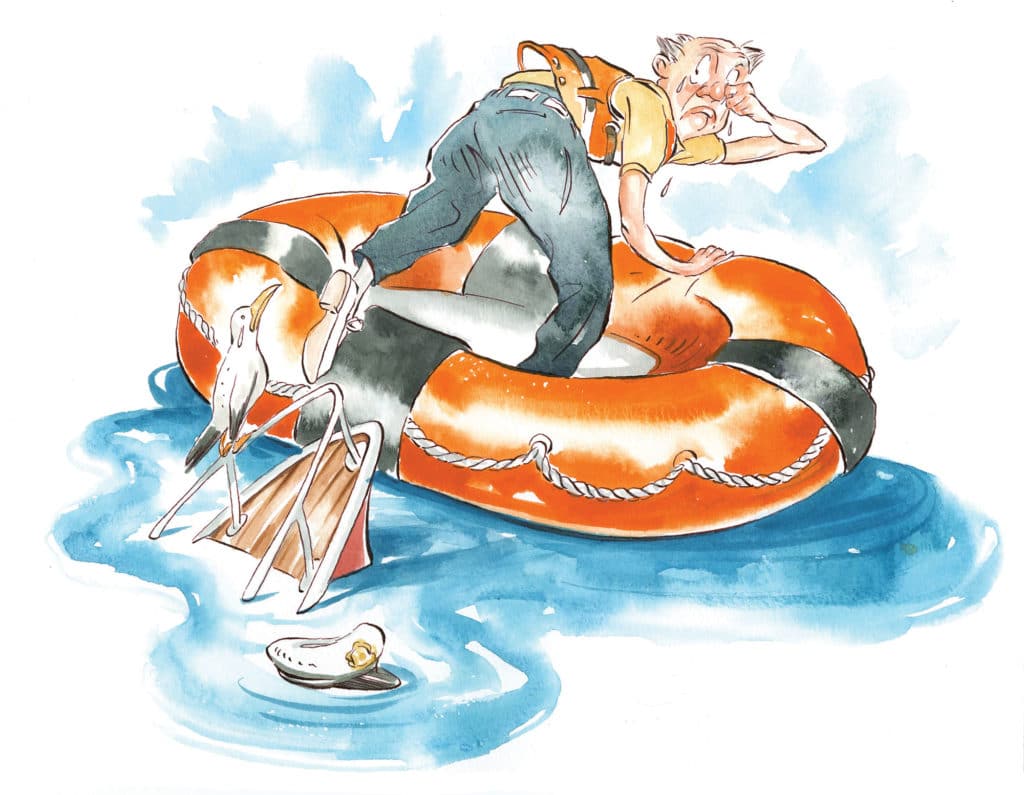
There are two general schools of thought with respect to abandoning your boat as lost, both summarized by the semi-wisecrack question of whether it is better to step down into a life raft or step up into one.
One need not own a life raft to understand the concepts. The first implies that you are leaving a boat that is still floating. The second school of thought applies to those abandoning a vessel that is sinking, or gone. Certainly, cases can be made for acting along either line of thought. Like so many important boating questions, the best answer is “it depends.”
It depends upon you, your crew, your boat, your equipment, and the exact situation you find yourself in.
I believe good seamanship dictates running through scenarios in advance so as to be more prepared to act decisively should worse come to worst. Here, I present two notional abandon-ship situations that will hopefully inspire you to consider the potentialities before the need for you to leave your boat for real arises. In each scenario, we’ll presume you’ve donned a life jacket and made a Mayday call with a portable VHF radio.
Let’s say the grill flares up and ignites your canvas helm enclosure. Can you put out the fire with a single extinguisher? Can you even get to your extinguisher, or are the flames blocking your access to the cabin where the extinguisher is stowed? Got a bucket?
Step Down
Unless I could put the fire out in about 10 seconds — or with a single fire extinguisher — I’d get off. Cut the boat loose, board the other boat, get in a raft, or swim away from the burning boat.
Another case might occur during a coastal cruise. With night approaching, your high-water alarm sounds. You stop the boat, pull the bilge hatches, and there is water, water everywhere and coming in fast. The failed intake hose is attached to a through-hull fitting that is not a proper seacock with a flange and backed base. So when you throw the lever, the stub breaks off. The pumps are working, but it’s not enough.
Step Up
I’d stay with this boat as long as it was stable, using manual pumps and buckets to assist the dewatering. I’d also jam a mop handle, T-shirt, toilet wax or whatever into the hole where that not-a-seacock was. Then I’d wait for the Coasties or the towboat with its big, thirsty, gasoline-powered pumps.
I could create more scenarios. The point is to think about what might happen before anything does happen so that you are as prepared as you can be to protect the lives of your crew.




